Based on the writings of
My Second Grade Teacher
Marilyn Phenice Thurmon Strickland
Bernard Orville Phenice always thought he could do just about anything, and he proved he often could. Orville was born on August 26, 1911, and not long after, he decided he wanted to be a farmer when he grew up. He went to school and was within a year of graduating, but ran into complications with school credits so he left for the school of life.
Looking back at his life, there is little doubt he was a self-taught master of many disciplines. The details of his story below certainly back the claim of the many that knew him and remembered him as “a man before his time.”
His dream of becoming a farmer was realized when, in the early 1930’s, he was fortunate to partner with his brothers, Henry and Warren, to purchase an 840-acre farm in Pine Island. Not long after, they added a tenant farm in Hathaway near their parents, Harry and Daisy Phenice, who had married in Lake Charles in 1900. His father, born in 1874, came from Pennsylvania via Kansas. His mother, born in 1876, came from England at age 10 via Pennsylvania.
In January 1934, Orville married Mary Elta Whitman, who had moved with her family from Missouri to Hathaway as a young girl. When asked in her later years about her greatest pleasure in life, Elta answered “my family.” Being a farmer’s wife and mother of five, she kept busy with the usual household duties of the day. Certain times during the year her days were often filled with canning fruits and vegetables, or cooking meals for threshing crews of 20 or 30 men at harvest time. She would also run errands for her husband from time-to-time, like when he needed replacement parts from Jennings. Out in the yard, she would pick eggs, but she would not milk a cow. She would pick and clean a chicken but she would not wring its neck. In the community, she was active in church and school activities. She was also an excellent seamstress. About the only housework she did not do was the ironing. Instead she had contraptions she used to help pants dry with a crease or to help linens dry smoothly. Or she hired her girls to do the ironing for a penny a garment.
For newlyweds in the middle of the Great Depression, they did pretty good. They lived in a small farmhouse at the center of the farm. When they moved in, they bought furniture from a second-hand furniture store in Lake Charles. Orville made the dining room table. His brother, Sylvan, gave them a bathtub he made himself. Of course, there was no running water in the house, so the hot water had to be heated and poured in the tub. Water was brought in from the hand pump outside and heated on the stove. The wood stove did have a water reservoir but it was not used to supply the tub with hot water. There were built-in cabinets in the kitchen. They had an ice box on the front porch. In those days, there was home delivery of ice blocks from Jennings every other day. Electricity wires made it to their farmhouse about 1938. In no time Elta had the modern conveniences of an electric stove, lights, and a refrigerator.
Orville had all the qualities for success. He had great instinct, he was innovative, he was a problem-solver, and he was driven to improve himself, his operation, and anything or anyone that he encountered.
He worked hard during the first years of his marriage. From early morning to dusk, he was working, working, working. After the sun went down, he plowed fields, worked around the house, or he spent his night with the relift pump to keep it running. But there was no work on Saturday nights. That was time for farmers and their wives to have a night out in Welsh. They met at the farm equipment store, went grocery shopping, and then they went to the movies. On Sundays, Orville and his family, sometimes with his brothers' and sisters' families, would gather at his parents’ home. The kids played and ate ice cream or water melon, the men played cards or dominoes and, the women sat and visited.
Orville’s innovative spirit was a great asset in the fields. There he and his brothers learned the bounty of the area’s first “second crop.” After they cut the rice, leaving only stubble, they flooded their field again. It was duck season and they wanted to make sure water fowl flying overhead knew they were welcome to stop on their farm. Who knows how many ducks they bagged, but they did discover that the water was causing a remarkable growth in the rice stalks. So they fertilized the field and harvested another crop in the same season. The second crop has now become common practice among farmers in the area, and it all started with some duck hunting.
Orville’s problem-solving abilities helped him in the fields. When a rice field is flooded, farmers use cuts in the levees to regulate flooding. When Orville was farming, the common practice was to walk the levees with a shovel and repair any washouts. (Interestingly, it was on these walks as a young man that he stopped to visit with a young woman who lived next to the Hathaway farm. He eventually made her his wife.) Always seeking to improve current methods, Orville thought preventing washouts was the better solution. He realized that the cuts in the levee needed reinforcements. He began wrapping old trousers on the end of the cuts in the levee to reinforce the cut. His idea worked. Today, instead of trousers, farmers use plastic to reinforce the cuts in their levees. He may or may not have been the first to do this, but his idea was original to him.
Orville was bold in his farming techniques. Other farmers were impressed that he could get his planting done in one pass by lining up a thirty foot string of implements, including a pulling disc, springtooth harrow, planter, and a cultipacker behind the planter. It is not surprising then that after a presentation at a local farmer's meeting, where the International Harvester representative was explaining a new, but clearly impractical, feature on a combine, Orville spoke up and said “Now I know where all the engineering school drop-outs are, International Harvester hired them.”
After several years of working the farm in Pine Island, Orville decided it was time to go on his own. He made an arrangement with his brothers to give them control of the Pine Island farm, and he would work the land in Hathaway. That farm was a 320-acre tract rented from Ms. Katie Cronchite, who lived in Tulsa, Oklahoma. In the wake of the Evangeline and Jennings oil boom of the early-1900’s, she had purchased the land to prospect for oil and would not sell the land. But Orville kept a standing offer if she ever changed her mind.
Thinking ahead, Orville made an arrangement with Ms. Cronchite to dig a deep well on the land, which would save him from paying a fifth-share of his crop to a canal company. The well soon paid for itself many times over, and with his savings he would soon make the jump to a farm of his own, while continuing to plant the tenant farm.
About 1940, Orville purchased 23 acres in Raymond. Having benefitted greatly from pumping his own water for his tenant farm, his first order of business on his new farm was to dig a deep well. To pump the water from the ground, he bought a windmill in Jennings, and reassembled it after it was hauled in pieces to Raymond.
Next, his new spread needed a home for his growing family. But a thinking man did not pay for lumber from a lumber yard; not when there was lumber available in bulk at auction. (If he had been looking for lumber two years later, rationing during WWII would have made the auction his only option). It just so happened that the Jeff Davis Parish School Board was auctioning the school houses that were replaced by a brick and steel structure at Hathaway. But Orville’s work on the farm did not allow him to attend the auction, so he asked his wife to attend. He instructed her not to bid in rounded-off amounts like $200, but instead to make distinct bids like $202.46. She won bids on two buildings, and Orville now had the lumber to build a home for his family.
The first structure he built on the farm was what would become a two-car garage once the house was completed. He was able to raise the garage pretty quickly for his wife and two young girls to have a temporary home. And with a place for his family and fields that needed attending, he worked on the house when he could … for two years. Living in the garage was a sacrifice he and his family had to make for an independant operation. And sacrifice they did, as they continued to have no running water or plumbing until the house was livable. By the time Orville had progressed enough to make the house livable, they were expecting their third girl. The upstairs was completed shortly after her birth. Two years later, they had their only boy, and nearly six years after that, their fourth girl was born.
Shortly after World War II had ended and machinery for consumers was, again, making its way out of factories, Orville, his brother, and a friend, each bought a combine. They were among the few who had them. In addition to cutting their own farms, they hired out their machines, and so it was, threshing crews were soon replaced by a fleet of combines.
For several years, he planted the school board’s Section 16 land in Pine Island. Even though he was not going to farm there in the long run, he invested his time to improve the land using a 60-foot land-leveling device he built for himself. Someone asked him why he would spend so much time and money on the land when he did not know how long he would be farming it. Orville answered “Well, as long as I am farming it, I will get the good from it and after I leave, the next fellow can benefit from it.”
Orville always had his eye on expansion. When his neighbors, Arthur Lang, Aurelian Clement, and others, sold their property, he was there to make a deal. And eventually, he made a deal for Ms. Cronchite’s land when she was ready to sell. By the time he retired, he had amassed 600 acres and had added many improvements to the land.
Orville was a strong man of solid build. He stood 5 feet 10 inches and weighed 210 pounds. He was fair skinned with dark hair, blue eyes and a dimple in his cheek. He was a tough man. This toughness was with him from childhood. He had the scars to prove it. As a boy, he suffered a horrible trauma that left him scarred on his shoulder and upper back, for life. He had been fooling around under the wash pot, which hung over an open fire. The apron he was wearing dipped into the flames and ignited. Before he could react, the fire had climbed the apron and by the time the fire was put out, it had consumed his shirt. Later in life, when he would explain the scars, he would always say “that just showed I should not have been wearing an apron.” Joking aside though, he was always vigilant when young people were around a fire and routinely warned of the dangers of carelessness around fire.
Needless to say, after suffering as he must have, his threshold for pain was pretty high. One afternoon he was repairing a machine and accidentally put his hand in the fan blade. When he jerked it out, he looked at the bloody mess, and wrapped the wound with a handkerchief. When asked if it hurt, he replied “You’re darned right it hurts!” and went right on working.
Orville proved time and again that he had the strength of two men. One afternoon, Orville’s son-in-law and a friend were struggling to move an anvil out of the trunk of the car because it "must weigh six hundred pounds, at least," they said as they came into the house complaining. They could not lift it out of the trunk. Orville doubted the anvil weighed 600 pounds and went out to the car to take a look. He reached down, put his arms under the anvil, and lifted it. With a grasping bear hug, he raised and lowered it a few times, testing the weight then put it back in the trunk. He then walked away, saying “No, it can’t weigh more than three hundred pounds” and went back inside and sat down. Another afternoon, he sent two hired men to Pine Island to pick up a levee plow in his pickup. They came back without it because it was too heavy to load in the truck. Orville gave them something else to do, drove to Pine Island, loaded the plow into the truck and brought it back, by himself.
Not only was he strong physically, but he was always steady and there when needed. He did not advertise his availability, but everyone who knew him knew they could depend on him when the need arose. One afternoon, Orville’s son-in-law was helping load rice into a cart. He lost his footing and fell into the cart. His leg became caught in the auger. It soon became apparent that there was no way to pull him out and save his leg.
Orville was a self-taught welder and had the right tool for the job. He had to cut a hole in the cart with a torch to get his son-in-law out. When the ambulance left to take him to the hospital in Lake Charles, Orville rode along. On the way, they stopped at a small hospital in Welsh for pain medication. During the stop, a young attendant hopped into the back of the ambulance and reached out to lift the pants leg to see the wound. Orville very sternly told him “Don’t touch him!” There was no blood coming from the wound and Orville did not want to chance moving him and start the leg bleeding. Although Orville had done all he could, doctors in Lake Charles had to amputate the leg above the knee.
Orville did not attend church regularly; however, he encouraged his family to attend, supported the church, attended its social functions, and was a key player in constructing the new church building for Raymond Methodist Church. And although he did not make it on Sundays, Orville was a man of deep abiding faith. The most telling evidence of this faith was his ability to sleep easy when an approaching storm threatened his crop. He knew it was out of his hands.
Consistent with his toughness and control, Orville was not emotionally demonstrative; he showed his love in actions rather than in words or displays of affection. For example, out of respect for his wife, he kept his beer in the outside refrigerator because she wouldn’t appreciate having it in the house. He rarely attended church, but would go when family was in town. He was not putting up a front; he was honoring his family. For those who loved him, the words were not necessary because he left no doubt he loved, respected, and approved of them.
On occasion, he did offer heartfelt advice. His granddaughter recalled one of the few times she remembered him expressing a caring remark. She and her grandmother were in the kitchen cooking and having conversation about dating and boyfriends. Orville caught a piece of the conversation when he came into the room. He interjected his advice, saying “Just remember when you choose a husband you are also choosing a father for your children.” This really struck her because this was not characteristic of her grandfather. Another granddaughter recalled a night right before a pageant for parish fair queen, Orville pulled her aside and reminded her that whether she won or not, she would still look the same. His message was simple and prophetic: If you win, stay humble; if you do not, keep your chin up.
Orville was not one for small talk or banter. He was quite most of the time, unless there was a debate to be had or he felt the need to share his opinion on the subject. Debate was like a sport for him, especially when his brother Warren came for a visit, or when he was visiting his friend, John Compton. When Orville would stop by John’s shop, they would get to talking on a particular subject. John would have to think about whether he was “pro” or “con” on that subject before he spoke up. He knew that whatever side he chose, Orville would come back with something like “Oh, I don’t know about that…,” which would begin his take on the subject, which would certainly be the opposing viewpoint.
Orville had a keen wit. Once, he was helping a poor speller fill out a job application and he was asked how to spell “Calcasieu.” He obliged. Then he was asked how to spell “National,” where upon Orville supplied the correct spelling. Then, without prompting, Orville spelled “Bank” for him. Another time at a family Christmas, everyone was visiting in the den and a conversation on funerals began. Orville said he did not want any money spent on a fancy casket. He wanted to be buried in a simple pine box. His wife heard this and pursed her lips and said she did not want a pine box because people would think her family was too cheap to give her a nice funeral. Orville replied “Well, if that’s what you want, we’ll get a pine box and just put money in it with you.” His wife said “That seems kind of silly to fill it with money.” Orville replied “Okay, we’ll write a check!” Even his wife had to laugh.
He was at his best when he combined his need to share an opinion with his keen wit. On occasion he would call a manufacturer if something just wasn’t right. Like the time he called the corporate offices for Charmin toilet paper. They had changed the scent of their rolls and he could not stand the smell. He called and told them he thought "toilet paper should smell better before you use it than after!” Or the time he called the corporate office for Parker pens. He had bought his wife a nice pen with a lifetime guarantee. When the pen ran out of ink and was told that they no longer make the pen, he told them “This pen has a lifetime guarantee and I ain’t dead yet.” They sent him a new pen.
One of Orville’s favorite colloquialisms was “Seems like a fellow could…,” which meant he was thinking through how to do something, which meant he was coming up with a better way to do something. He was certainly a master at creative engineering and could “make do” with whatever was on hand. Like the time he stacked two bookshelves on top of each other. He apparently did not have any dowel pins, so he made his own, using cuts of pencils. Years later when the bookshelves were disassembled his “Orvillized” fix was discovered.
Many times, the process of fixing something is trial and error. Orville was not afraid to fail. He knew it was part of learning. When he came upon an error, he’d say “That vexes me.” Like the time he carpeted the living room and had to trim the doors so they would not drag on the carpet. After trimming a door and rehanging it, the door still drug on the carpet. This vexed him, no doubt, until he discovered he’d trimmed the top of the door!
For many of his fixes, the finished product might not be the most beautiful, but it was always functional. Functionality, it seems, was top priority. For example, he converted an old blue-and-white Chevrolet pick-up truck into a dump truck. It worked, but it was really weird-looking. Another example of a functional fix was when he would buy a new pair of work boots. The first thing he would do was cut a slit along the back to give his ankle more room. His wife would question why he always ruined good boots. He would reply that they were not any good if they hurt his feet.
One of Orville’s qualities that fit his innovative spirit perfectly was that he liked new things. He was on the cutting-edge, whether it was cars, farming equipment, household devices, etc. He was not afraid to spend the money he earned. When his wife questioned a purchase, he often responded “Money ain’t worth anything unless you spend it.” One of his favorite new things were new cars. The first family car was a Hudson Terraplane. Over the years he would buy a new Pontiac coupe, a DeSoto (with Fluid Drive), then a ‘49, ‘52, ‘55, and ‘57 Pontiac, a ‘59 and ‘61 Ninety-Eight Oldsmobile, a Chrysler, a Cadillac, and a Toyota Cressna.
Orville and his family saw television for the first time on a trip to visit his in-laws for Thanksgiving in Kansas City in 1951. They were walking down a sidewalk on a cold November day when they passed a hardware store with several TV’s airing in the storefront window. The family stopped and was mesmerized. Could it have been a new show called I Love Lucy that got their attention? Maybe it was George Burns and Gracie Allen dancing across the screen? Or maybe it was Bozo the Clown? Whatever the show that had their attention, it was enough that Orville immediately bought a television set and antenna when they were back home. It did not matter that the closest stations broadcasting television signals were in New Orleans and Houston. Back then there were no FCC regulations on broadcast power so these airwaves were definitely within reach … on a good day. Orville put his antenna atop the 60-foot windmill tower, and was able to get, at best, a poor signal. This type of thing is of little concern to an early-adopter. Orville was certainly that. He was the first in the community to have a set. But he did not have to wait forever for a better signal. A UHF signal was broadcast out of Lake Charles in 1952 and KPLC in Lake Charles began broadcasting in the summer of 1954.
He was also not afraid to put his time and effort into experimental farming processes. In 1957, the LSU Agricultural Service needed to test an experimental cover crop of clover. Cover crops are planted to prevent soil erosion, help with weed and insect problems, and to replenish the nitrogen in the soil. Clover, as a legume, is well-suited as a cover crop. Orville planted the experimental clover and harvested the clover for its seeds on the tenant farm owned by Ms. Cronchite. He used his combine to harvest the clover but had to reconfigure the cutter bar to get it low enough to cut the clover and rig the hopper to contain the seeds. His creative engineering worked and clover became one of his most lucrative ventures.
To successfully harvest clover seeds, honeybees were necessary to pollinate the clover. And honeybees, naturally, produced a lot of honey. He bought a machine that removed the honey from the combs and he stored the honey in jars. Some jars were sold, but most were for personal use or given away to family and friends.
He reinvested some of the clover money in an Angus bull. The only problem was that the bull was in Tennessee and he did not have a trailer. So he and his brother, Henry, rented a U-Haul (without disclosing their purpose), lined it with hay, and came back with the bull. He only had a herd for a few years but the freezer was always full and the steaks too large to fit on the plate. He liked his steaks rare. If anyone ever complained about the meat being too tough, he would say “It’s tougher when there ain’t none.” He liked to eat his steak with a side of iceberg lettuce. He cut the head of lettuce into chunks, pour milk gravy or Thousand Island dressing on the chunk of lettuce, and eat it like a piece of pie.
When he was sixty-two years old, Orville built a lake house on waterfront property he had purchased on Toledo Bend. He built the house by himself with the help come along winches, except for when a go-fer or a board-holder helped. The house was built using lumber from an old dairy barn on his farm from an earlier venture with his son-in-law. One of the feats that amazed his family was raising the rafters with nothing but winches. Other feats of strenghth included getting concrete to a sidewalk along the house. He could not get the cement mixer up close enough to the house, so he had to haul the concrete a good distance from the mixer to the sidewalk in a pair of five-gallon buckets (each weighing about 80 pounds). When he built a deck, he had to dig post holes for support. Orville dug the first eight as his grandson observed. He did them in rapid succession. While watching his grandfather, he thought the ground was mostly sand. But, when it was his turn to help out on the last two, he found out the ground was as hard as concrete.
Orville’s other project at the camp was his boathouse and the boat launch. In typical-Orville fashion, he thought lauching his boat from the marina's launch was unnecessary, when he could lanch right from the shore at the cabin. When he built the boat house, he had to think about how to get the boat trailer in the boat house and still have it available to take the boat to the marina to launch it if he needed too. He decided to launch the boat on the trailer. He arranged tracks into the water and rigged two rims to line the trailer wheels on and keep them steady on the track. When he backed the boat into the water, he left the boat bound to the trailer. Once the boat was floating, he released the boat and pulled trailer out of the water, parking it in the boathouse. Many have marveled at his launch as a work of superior engineering. The boat on the trailer launched smoothly every time. His way of perfectly aligning the tracks from the boat house to the water was pure genius. The wheels never started to bind down the track or ever came off the track, ever. Another feature that was mind-boggling was the boat hoist (that surely was not) but certainly appeared to have been welded under water. His inventiveness did not stop there. He needed a light that would stay-put, but still could be moved in a pinch. His solution was to fill a bucket with cement and anchor the lamp in the bucket. Always inventive.
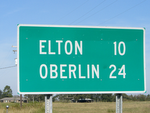
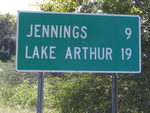
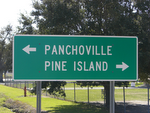
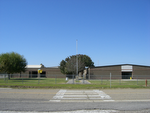
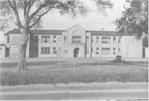
1 comment:
As Orville Phenice's granddaughter, I was raised living next door to him on the Hathaway farm. This account really captures who he was (except that he would have considered a well-done steak burned - actually he always had his rare) and I am so pleased that it has been documented and shared with others. Orville Phenice was an exceptional individual, intelligent, hard-working, and eccentric, but most of all an honorable family man. I am proud to have called him "Grandpa" and delighted and touched when I recognize his traits in my own children.
Post a Comment